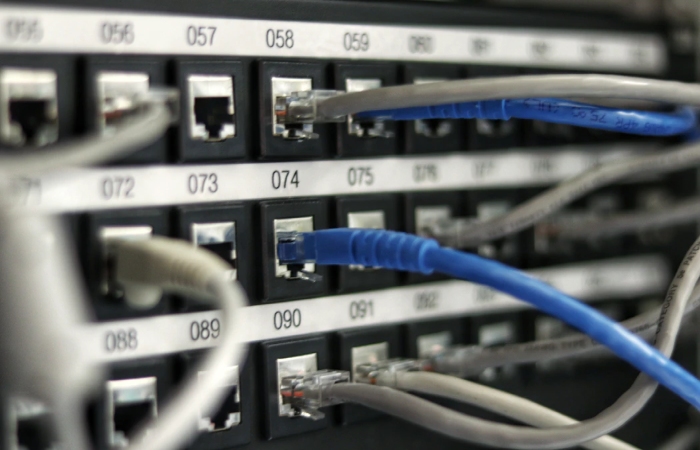Table of Contents
What is Ethernet?
Ethernet is a technology that connects a wired local area network. And allows the device to communicate with each other through a protocol that is the common network language.
This LAN is a network of computer and other electronic devices that covers a small area in your places such as the office, home, room, or building. Unlike LAN, a vast area network ( WAN) covers much larger geographical areas.
In addition, [Ethernet] is a protocol that controls the processes of data transmission through LAN. It also indicates how network devices can transmit and format data packets. So that other network devices in the same area network segment can receive, process, and recognize them.
Any other device with access to a geographically located network using a cable, such as a cable, rather than a wireless connection, probably uses Ethernet, whether at home, in the office, or at school.
However, these physical cables have a limited distance that they can fully stretch and carry enough signals through their stability. This is the reason why there are dissimilar types of Ethernet cables use to perform a particular task in a given situation.
The Different Types of Ethernet Networks:

Fast
This is a kind of Ethernet network that can pass on data at a speed of 100 Mbps via twisted pair or fiber optic cable. Data can be transfer from 10 Mbps to 100 Mbps without the need for protocol translation or changes to the application and network software.
Gigabit
This is a form of an Ethernet network that can transfer data at a speed of 1000 Mbps based on a twisted pair or fiber optic cable. Among other types of [Ethernet] cable, this is the most popular.
Switch
This is a network piece of equipment that is needed for multiple network devices on a LAN. When using this type of cable, a normal network cable will be used instead of a crossover cable. This Ethernet cable sends data from one device to another device on the same network. Typically, these support different data transport rates. [Ethernet] is usually used as a network technology because the cost of such a network is not too high.
The Functionality of an Ethernet
To fully know the mechanism behind the its procedure, technical knowledge and computer information are required.
For example, if a machine on a network wants to send data to another device, it detects the carrier, which is the main cable that connects all the devices. If nobody is sending anything or if it is free, it sends the data packet over the network, including all other devices and checks the packet to see if they are the recipient.
This recipient consumes the package. If you’re already on the road, the device you want to send stays behind for a few thousand seconds to try again until it can send.
In addition, there are also limitations to Ethernet cables. An [Ethernet] cable like a power cable has a maximum distance power. This means that the cable(wire) has an upper limit on the time that elapses before signal loss affects performance.
The ends of the cable should be close enough to each other to receive signals faster, but they should also be away from electrical interference to avoid interruption. For both Ethernet and the Internet, when using the Ethernet network.
The network router also serve as a bridge to the Internet. Through the router, it connect to the modem, carries the internal signal, sends and receives the request for data packets, and routes them to other computers on the network. Even if the network is not in use, in most cases, the computer will connect to the modem via an [Ethernet] cable.
History of an Ethernet
Between 1973 and 1974, Ethernet was developed by Xerox Corporation at its Palo Alto Research Center in California (PARC). The idea was documented in a memo written by Metcalfe in 1973. Where he coined it after the luminous ether once postulated that it existed as a pervasive and completely passive medium for the propagation of electromagnetic waves.
Ethernet competed with Token Ring and other proprietary protocols. With this, he was able to adapt to the realities of the market and switch to a thin and cheap coaxial cable and then to a ubiquitous twisted pair write. In the year 1980, it was the dominant network technology.
Since then, this Ethernet technology has evolved to meet new market and bandwidth requirements. It is now in use to interconnect appliances and other personal devices.
The Different Types of Ethernet Cables:
- 10Base2 – Fine Ethernet
- 10Base 5 – Fine Ethernet
- 10Base-T – Twisted pair cable and can reach a speed of 10 Mbps
- 100Base-FX- this makes it possible to achieve a speed of 100 Mbps through multimode fiber optics.
- 100Base-TX- similar to twisted pair cable but with 10 times faster speed.
- 1000Base-T – Category 5 twisted pair double cable that allows a speed of up to one Gigabit per second.
- 1000Base-SX- is based on multimode fiber optics that uses a short wavelength signal of 850 nanometers.
- 1000Base-LX – is also based on multimode fiber optics but uses a long-wavelength signal.